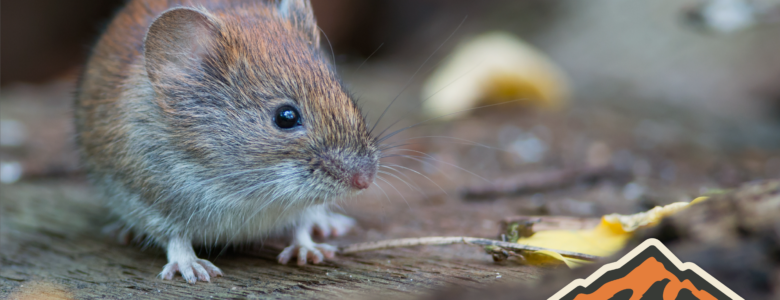As summer reaches its peak, Eagle Mountain residents find themselves dealing with an unexpected pest problem: an explosion in the population of voles and mice.
These small rodents have a higher presence this year, and have made themselves known in lawns and gardens across the community.
According to Eagle Mountain City’s Wildlife Biologist Todd Black, the surge in rodent populations can be attributed to several factors.
“We are on the third or fourth generation of these pests for the season, which equates to thousands of little vermin running around in neighborhoods,” Black said. “Environmental conditions aligning perfectly can lead to such population explosions.”
The primary culprits in Eagle Mountain are the western deer mouse (Peromyscus sonoriensis) and the meadow vole or sagebrush vole (Microtus). While gophers are also present, they have not seen the same population boom this year.
Black explained that these rodents are R-selected species, characterized by rapid reproduction, short gestational periods, and minimal parental care.
The mice are relatively easy to catch using baited traps with a peanut butter-oatmeal mix, and both live traps and snap traps have proven effective. However, the biologist cautioned against relocating these pests due to legal restrictions and the potential for creating problems for others.
He also advised against using rodenticides because of their toxicity to other animals and concerns about bioaccumulation in raptors.
Voles, on the other hand, present a more challenging problem. These rodents create tunnels in lawns, particularly in Kentucky bluegrass, and are difficult to trap. Black recommended drowning them out or placing snap traps near their holes.
Additionally, natural repellents like castor oil, hot sauce, liquid garlic, or pepper can be used to encourage voles to vacate an area, though they may simply move to a different part of the yard or a neighbor’s property.
One innovative method is a pipe trap.
“Putting 10-inch PVC pieces of pipe, capped off at one end, in the paths of the vole. Once the voles get in, they can’t turn around and get out,” says Black.
Reflecting on the situation, Black says the current vole problem might not have existed 30 years ago. The changes in agricultural practices and urban development have contributed to the increase in rodent populations.
“This is not just a city problem; it’s a city-wide problem,” he emphasized. “If you plant Kentucky bluegrass and water it excessively, you’re unintentionally contributing to the problem.”
Residents are advised to reduce trash and debris, which can attract rodents, and to be mindful of their lawn care practices. The city is aware of its role in the problem and is working to implement mitigation measures to help reduce the rodent population.
The current situation in Eagle Mountain mirrors issues faced by neighboring areas. Significant increases in vole populations in nearby Saratoga Springs and Draper.
The Utah Division of Wildlife Resources suggested that the vole population boom could be due to favorable environmental conditions, ongoing construction and natural population cycles that peak every three to six years.
As Eagle Mountain grapples with the vole and mouse invasion, residents and city officials alike are working to find effective solutions to mitigate the problem and protect their properties from further damage.


